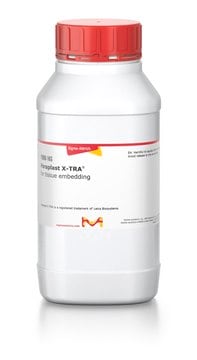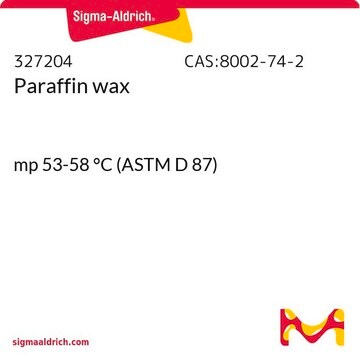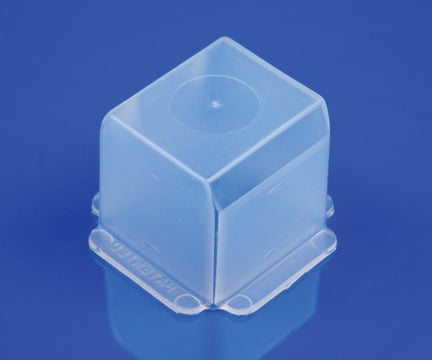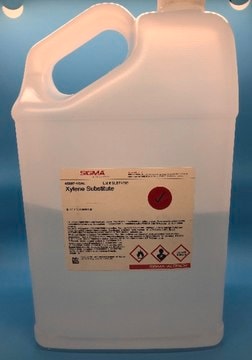P3683
Paraplast Plus®
for tissue embedding
Sinônimo(s):
Paraffin – polyisobutylene mixture
About This Item
Produtos recomendados
forma
solid
pf
56-57 °C (lit.)
56-57 °C
aplicação(ões)
hematology
histology
temperatura de armazenamento
room temp
Categorias relacionadas
Descrição geral
Aplicação
- Paraplast Plus® has been used in the examination of vertebral specimens of Malacoraja senta.
- It has also been used in the identification and expression analysis of PIN genes in rice.
- It has been used in the study of glucose transport mechanisms in uterine tissues during pregnancy.
- It has been used to embed Bouin′s fixed carp tissues, rat ventral prostatic fragments, and common bean (Phaseolus vulgaris L.) nodules.
Informações legais
Código de classe de armazenamento
11 - Combustible Solids
Classe de risco de água (WGK)
WGK 2
Ponto de fulgor (°F)
Not applicable
Ponto de fulgor (°C)
Not applicable
Equipamento de proteção individual
Eyeshields, Gloves, type N95 (US)
Certificados de análise (COA)
Busque Certificados de análise (COA) digitando o Número do Lote do produto. Os números de lote e remessa podem ser encontrados no rótulo de um produto após a palavra “Lot” ou “Batch”.
Já possui este produto?
Encontre a documentação dos produtos que você adquiriu recentemente na biblioteca de documentos.
Os clientes também visualizaram
nodules undergoing senescence
Conteúdo relacionado
Three-dimensional (3D) printing of biological tissue is rapidly becoming an integral part of tissue engineering.
Nossa equipe de cientistas tem experiência em todas as áreas de pesquisa, incluindo Life Sciences, ciência de materiais, síntese química, cromatografia, química analítica e muitas outras.
Entre em contato com a assistência técnica

